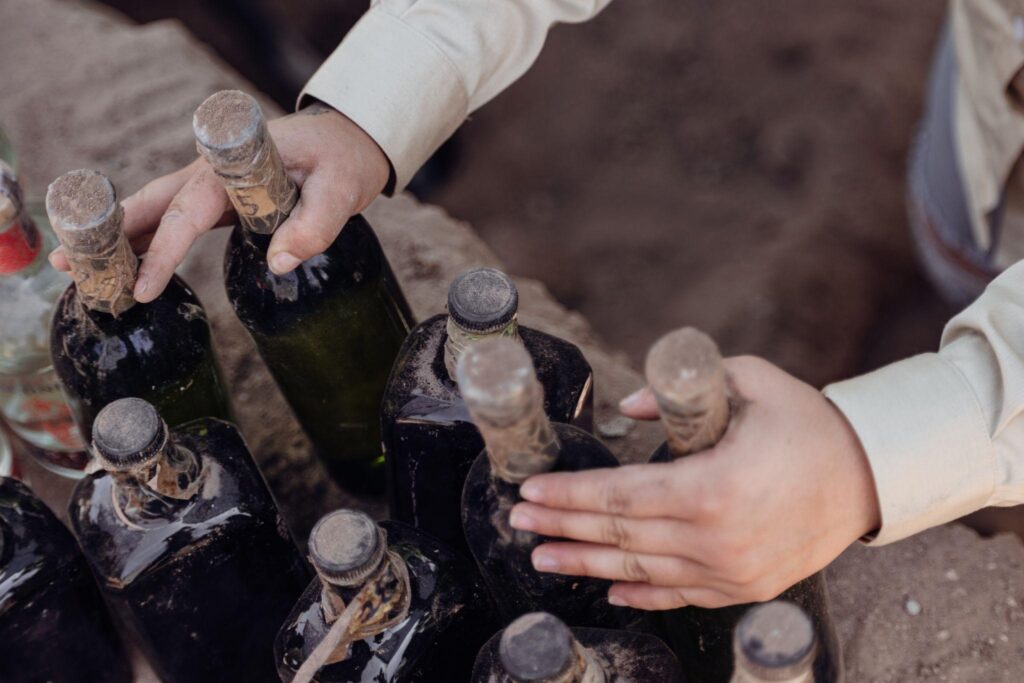Juniper Love: Exploring the Heart of All Great Gins

Every crisp gin has a piney and slightly citrusy note to it. This unmistakable character comes from Juniper, which is the soul of every gin. However, juniper plays a more significant role than just a flavor note in gin. It’s a legal requirement and a thread that ties centuries of gin-making together.
Let’s take a closer look at juniper berries that give gin its identity (though they’re not really berries).
Table of Contents
The Botanical Core of Gin
Juniper berries are tiny seed cones from the Juniperus genus. They’ve been used in food, medicine, and spirits for centuries. So, Juniperus communis is the star in gin-making. It grows across North America and Europe in rocky, well-drained soils.
These blue-black spheres are what give gin its main character. In fact, the US and EU legally require juniper as a predominant flavor in gins.
But why juniper? It’s because it brings depth and a complex piney/bright flavor. Juniper also adds a subtle bitterness and a citrus lift to gin. It can also be paired with complementary botanicals like coriander or citrus peels to become a beautifully layered spirit.
Craft distillers often experiment with different botanicals, but they always need juniper. Without it, gin will simply not be gin.
Acronimo Gin: Mexican Roots, Desert Spirit
While most people often associate gin with Britain or continental Europe, the best gin comes from the deserts of northern Mexico. Acronimo Gin was born in Chihuahua, known for its beauty and agave-rich terrain. With a blend of traditional gin principles and local heritage, Acronimo respects juniper but also infuses ten locally sourced botanicals.
Acronimo’s secret recipe includes:
- Juniper from the Sierra Tarahumara
- Grapefruit zest for brightness
- Fragrant lavender and exotic cardamom
- Warming peppercorns and sweet anise
Each botanical is carefully infused over two weeks in a high-quality neutral grain spirit to produce a refreshing spirit that’s citrus-forward and slightly spicy.
How Juniper Is Harvested and Processed
Like grapes for wine or hops for beer, juniper is also wild-harvested or cultivated. Although many craft distillers prefer wild berries for their intensity and complexity. Juniper berries ripen slowly and are usually harvested in the fall, once they turn dusty blue.
Since juniper can take up to three years to become mature enough, harvesters need to be careful with their timing. They need to be dried after harvest. The goal is to preserve their essential oils and store them in cool, dark spaces. This process makes it easier to concentrate their flavor and prepare them for infusion or distillation.
Quality matters a lot when it comes to gin-making. A poorly stored juniper berry can lose its punch. But when it’s handled with care, the releases a fragrant mix of pine, resin, and soft citrus. This is exactly what gin lovers crave.
Distilling Juniper’s Essence: Techniques and Innovation
Distilers use several techniques to get the best out of juniper. Some of these include:
- Maceration: Soaking the botanicals in alcohol before distillation.
- Vapor infusion: Suspending botanicals above the spirit to let the alcohol vapor pass through them.
- Direct distillation: placing botanicals directly in the pot still.
Each distilling procedure influences how juniper berries express themselves. For example, maceration will often deliver a heavier, oilier juniper flavor. While infusion gives a lighter and more aromatic profile.
Frequently Asked Questions
1. What makes juniper essential in gin?
Legally and stylistically, gin must be flavored primarily with juniper. Without it, you’re just making flavored vodka.
2. Can all juniper berries be used for gin?
Not all are suitable. Juniperus communis is the standard for gin due to its flavor profile and safety for consumption.
3. What makes Acronimo Gin different from other gins?
It blends classic gin elements with local botanicals and a flavor philosophy inspired by Mexico’s desert landscape and sotol traditions.
4. Is juniper sustainable?
There are growing concerns about wild harvesting. Responsible distillers focus on sustainable sourcing and cultivation.
5. What’s the best way to taste juniper in gin?
Try a neat pour or a dry martini. Lower-sugar mixers (like soda or dry tonic) also let the juniper shine.
Final Thoughts
Juniper isn’t just an ingredient in gin-making. It’s the defining characteristic that unites every gin together. Every time you sip Acronimo gin or a classic dry martini, you taste a botanical that’s been revered for centuries. Juniper becomes more than just a flavor when it comes in the hands of skilled distillers. It becomes a story, a place, and an identity.
